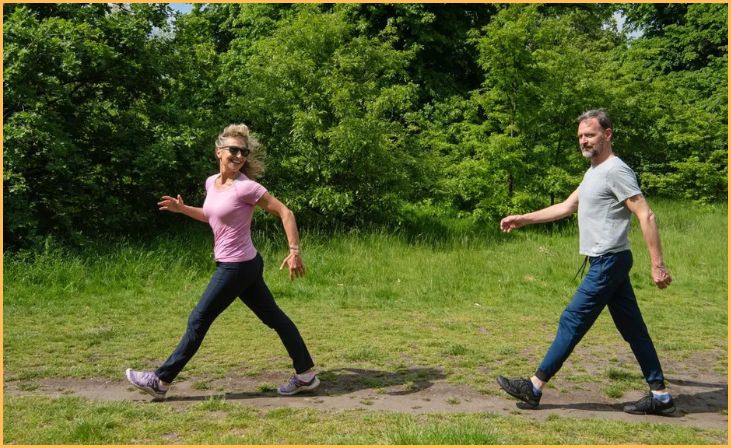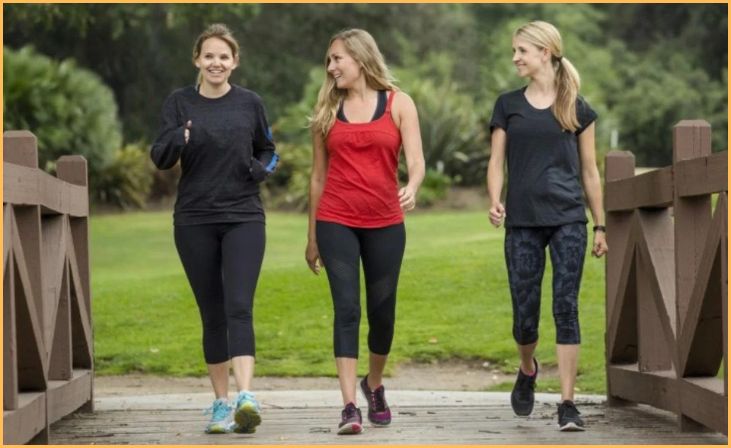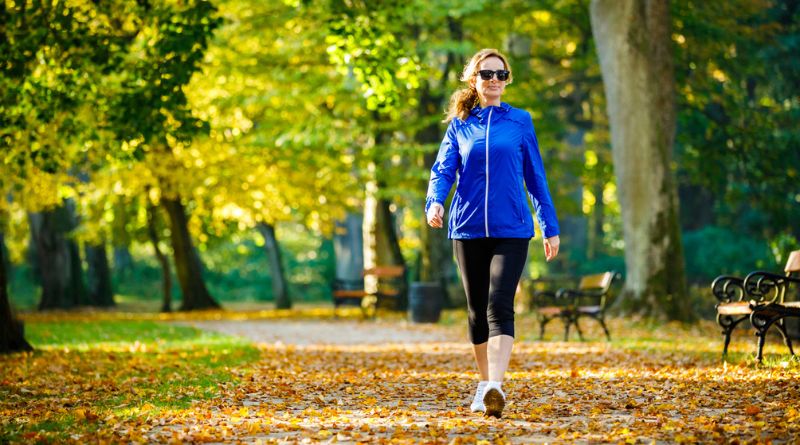Walking, a seemingly straightforward activity, holds remarkable power in enhancing one’s overall well-being. As we embark on this comprehensive guide, our aim is to unravel the intricacies of walking and delve into the realm of 10 Ways To Walk Better Daily. This journey is not just about putting one foot in front of the other; it’s about optimizing each step to enrich the quality of your daily walks. In the hustle and bustle of life, the simplicity of walking often goes unnoticed. However, in this guide, we shed light on the profound impact that intentional and well-informed walking can have on your physical and mental health. It’s not merely a means of transportation; it’s a conscious practice that can be transformed into a source of joy, vitality, and holistic well-being.
10 Ways To Walk Better Daily
Maintain Proper Posture

Good posture is more than just standing up straight; it involves aligning the entire body for optimal functionality. When walking, ensure that your ears align with your shoulders, and your shoulders align with your hips. Distribute your weight evenly on both feet, and avoid locking your knees. Engaging your core muscles is crucial; it stabilizes your spine, preventing slouching and reducing the risk of back pain. Proper posture not only enhances the aesthetic aspect of walking but also facilitates better breathing and digestion.
Also Read:- Best Exercises for Total-Body Muscle Building as You Age
Wear Comfortable Shoes
The importance of footwear cannot be overstated. Look for shoes that provide adequate arch support to maintain the natural curve of your foot. Cushioning is essential to absorb shock, especially if you walk on hard surfaces. The right fit is critical; your shoes should neither be too tight nor too loose, allowing your feet to breathe and preventing blisters. Consider the type of walking you do—whether it’s casual strolls, brisk walks, or hiking—and choose shoes designed for that purpose.
Start with Warm-up Exercises
The act of warming up is analogous to performing a gentle wake-up call on your muscles. Dynamic stretches improve joint flexibility, raise your body temperature, and increase the amount of blood that flows through your body. Swinging your legs, for example, works the muscles in your legs, which in turn increases the range of motion in those muscles. Both hip rotations and ankle circles help to lubricate the joints, which in turn reduces stiffness. In order to prepare your body for the physical activity that is to come, you should warm up. This will make your muscles more flexible and less likely to sustain an injury.
Set a Consistent Pace
To find the right pace, you need to strike a balance between being challenging and being sustainable. Your heart rate should increase while you are walking at a brisk pace, but you should still be able to carry on a simple conversation. The benefits to the cardiovascular system can only be obtained through consistent practice. Walking at a pace that is approximately moderate on a regular basis improves blood circulation, lowers blood pressure, and enhances the overall health of the cardiovascular system. For the purpose of monitoring your pace and gradually increasing it as your fitness level improves, you might want to think about using a fitness tracker.
Engage Your Core Muscles
One of the most powerful muscles in the body, the core is responsible for providing stability and support for every movement. While you are walking, make a conscious effort to contract your abdominal muscles. By engaging in this activity, you will not only strengthen your core, but you will also improve your posture. You can avoid discomfort and potential injuries by developing a strong core, which reduces the strain that is placed on your lower back. When you walk, make it a point to keep your core active. If you do this consistently, you will eventually develop a habit that is both beneficial and natural.
Take Proper Steps

There is a correlation between your walking stride and your gait, as well as your joint health and overall comfort. Do not force your steps to be excessively short or excessively long; instead, strive for a stride length that feels natural to you. You should push off with your toes after landing on your heel and then rolling through the step. This rolling motion makes it possible to transition between steps more smoothly, thereby reducing the amount of impact that is placed on your joints. The placement of your feet should be carefully considered, and you should avoid overstretching, as this can put strain on your muscles and joints.
Stay Hydrated
Maintaining proper hydration is essential to one’s overall health and well-being. Make sure you are adequately hydrated before you go for a walk, and bring a water bottle with you. Numerous bodily functions, such as the transportation of nutrients, the regulation of temperature, and the lubrication of joints, are all supported by water. Cramps in the muscles, fatigue, and a reduction in endurance are all symptoms that can result from dehydration. Pay attention to the cues that your body sends you regarding thirst, and make it a goal to drink water on a regular basis throughout the day, not just when you are out walking.
Incorporate Arm Movement
When you walk, the movement of your arms is more than just a natural byproduct; it is an active contributor to the overall efficiency of your walking. Your arms should be allowed to swing in a natural manner in order to coordinate with your steps. Not only does this rhythmic movement engage the muscles in your upper body, but it also helps you to maintain your balance. Your arms should be bent at a comfortable angle so that they can swing freely without experiencing an excessive amount of tension. This will allow you to reap the maximum benefits.
Practice Mindful Walking
A mundane activity can be transformed into a meditative experience through the practice of mindful walking. Engage your senses as you walk by noting the sensation of the ground beneath your feet, paying attention to the sounds that are occurring around you, and focusing on the rhythm of your breath. A deeper connection with your body, a reduction in stress, and an improvement in mental clarity are all benefits of practicing mindfulness. Incorporate mindfulness into your walk by consciously concentrating on each step, cultivating a sense of gratitude for the seemingly insignificant act of walking, and thereby incorporating mindfulness into your walk.
Gradually Increase Intensity

A deliberate approach to increasing the intensity of your walking routine is required in order to make progress. Alternate it up by walking uphill or incorporating intervals of increased speed. These are some examples of variations. Walking uphill is an excellent way to strengthen a variety of muscle groups, add a cardiovascular challenge, and increase the amount of calories burned. The key to avoiding overexertion and lowering the risk of injuries is to make gradual progress in your workout routine. Take note of how your body reacts, and if you are able to do so without discomfort, gradually increase the intensity of your walking routine. This will ensure that your walking routine continues to be both beneficial and engaging.
Also Read:- Pilates Exercises for Sculpted Abs and Strong Arms
Conclusion
By seamlessly integrating these 10 Ways To Walk Better Daily into your daily routine, you have the potential to revolutionize your entire walking experience. Each of these strategies, ranging from optimizing your posture to embracing the practice of mindful walking, plays a pivotal role in not only making your walks more enjoyable but also significantly enhancing their overall benefits. Moving beyond posture, the significance of mindful walking cannot be overstated. This practice involves being fully present in the moment during your walks. It’s not just about covering a certain distance; it’s about immersing yourself in the sights, sounds, and sensations around you.
FAQs
A It’s generally advisable to wait at least 30 minutes after eating before embarking on a walk. This allows for digestion to begin and reduces the risk of discomfort.
A Regular walkers should replace their shoes every 300-500 miles or when signs of wear and tear become evident. Worn-out shoes can lead to discomfort and increased injury risk.







